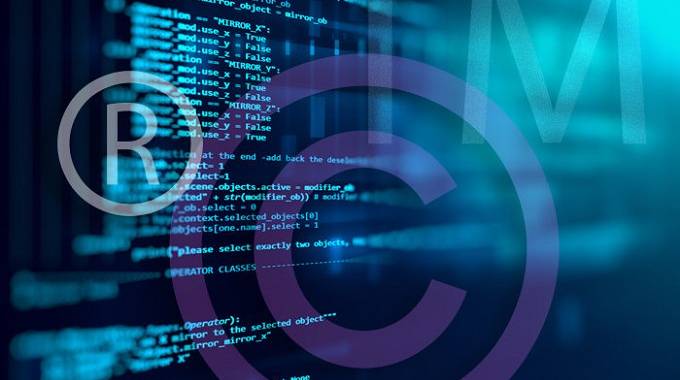Online Intellectual Property management

Aleck Ncube
THERE is hardly any product or service today that is not being advertised, at least, or sold through e-commerce. The value of commercial transactions on the Internet as well as mobile commerce has increased substantially in the last decade.
Electronic commerce is a global economic giant. The number and value of trading activities on the Internet are increasing daily.
The knowledge economy is now at the forefront and digital products and service delivery are important facets of the knowledge economy. Creators and intellectual property rights holders must be confident that their IP is protected from online piracy and that they retain control over its use.
Copyright Law and the Digital Environment
From a legal and a management perspective, it is important to consider the impact of digital technology on copyright law.
Traditionally, copyright works are classified into different categories — for example, literary works, artistic works, computer programs, databases, and so on. In each category, works are afforded certain exclusive rights — in the case of literary works, for example, the right to publish, to make reproductions or adaptations, the right of communication and making available of works to the public and so on.
Digitisation of information — reducing information to binary bits of 0s and 1s, and the development of common technology standards for text, sound and video, such as html, MP3 and MPEG – enables digital content to be shared almost instantaneously, by millions of users.
It is very important to note that the rights of the copyright holder of a creative work continue to apply in the digital environment, in particular to the use of works in digital form.
Trademarks and Domain Names
The growth of the commercial use of the Internet has led to new forms of trade mark infringement. The most prevalent form is domain name infringement. This takes place where a third party registers and uses the existing trade mark of another as a domain name, without the authorisation of the trade mark proprietor. Such infringements frequently involve domain name speculators or cyber-squatters who register existing trademarks as domain names to block subsequent registrations or to hold trade mark proprietors to ransom.
Domain names are also known as:
– “web addresses”,
– “.com’s”,
– “dot com’s”,
– “URL addresses”, or
– “net names”
A domain name is a mnemonic, representing the address of a computer on the Internet that is easier to remember than a string of numbers. Remember that trading names, personal names and company names can be registered as domain names — thus domain names may incorporate a trade mark or a company name, but it is a separate and distinct form of designation.
Domain names have become a standard mechanism for communication with customers. Domain names identify the origin of a business and its goods and services and the domain name assumes a role similar to that of a trade mark. A domain name may be registrable as a trademark if it is distinctive and it is used in commerce in respect of certain goods or services.
Web-site Development checks
SMEs must perform a trademark, patent and copyright check to ensure that their company’s web site is not displaying or making use of infringing material or processes. Also, SMEs must seek permission to display trademarks owned by others prior to referring to companies on their web sites. In addition, SMEs must secure licences for using a database, search engine, electronic commerce transaction tools or other technology prior to any design, customization, or installation work commences.
This exercise will help avoid any contributory infringement claims in the future. SMEs must remember that they may not have the right to reproduce or distribute content that belongs to others. They must never download or distribute any digital content on their web sites that does not belong to them unless they have obtained written permission from the owners to distribute it on the Internet. They also need to seek permission to digitise any work.
Notices and Disclaimers on the Web Page
SMEs should take whatever steps that are necessary to prevent visitors to their web pages from “borrowing” the content, whether they intend to take the content without authorization or not.
A typical copyright notice and disclaimers prohibit unauthorized reproduction or misleading modification of the content on the Web page. A typical trade mark notice and disclaimers may request that there be no use of trade mark for purposes other than description, and will disclaim any implied endorsement caused by linking to another web page.
On-line Trade mark Enforcement
The strategic management of domain names in the e-commerce environment is just as important as it is to properly acquire and maintain trade mark rights in the conventional setting. There are a variety of ways whereby the on-line unauthorised use of a trademark can infringe the rights of a trade mark owner. The unauthorised use of the trade mark can be:
– on a web page;
– in a link;
– on a menu bar; or
– as a repeating watermark (an image in the back ground of web pages).
SMEs must take definite steps when they become aware of the unauthorised use of their marks. The domain-naming system has vast advantages for the e-trader. A carefully selected domain name is an important element of successful trading on the Internet. The use of domain names which are substantially similar or identical to trade marks poses a challenge yet to be addressed.
Suggestions for SMEs to manage their IP in their electronic commerce strategy:
– Take stock of your IP assets that may be relevant to e-commerce by listing any potential resources and related contracts.
– Avoid the damage to your IP rights caused by infringement by third parties, as well as your own infringement of other parties’ IP rights when registering Internet domain names.
– Avoid damage to your IP rights caused by copyright infringement by third parties, as well as your own infringement of other parties’ copyright.
– Use great care when disclosing information that belongs to your company as well as that belonging to any third party.
– Insert legal clauses, such as arbitration and choice of law clauses, into contracts with users, to shield you from liability in other jurisdictions.
– Include IP rights notices and disclaimers on your Web page in order to protect your IP rights as well as to avoid infringing third Parties’ IP rights.
-Aleck Ncube is an intellectual property scholar based in Bulawayo. He can be contacted on Mobile: +263712374408 Skype: Matintas1 Twitter: @aleckncube Alternative E-mail: [email protected]











Comments